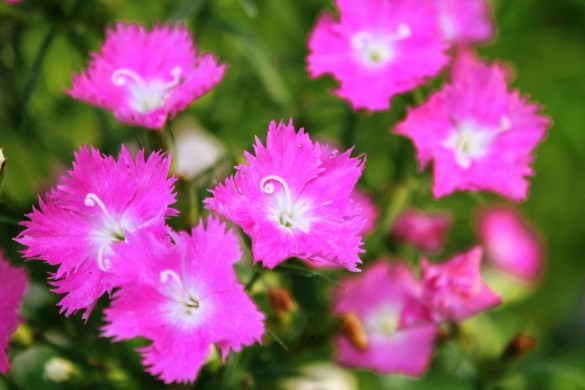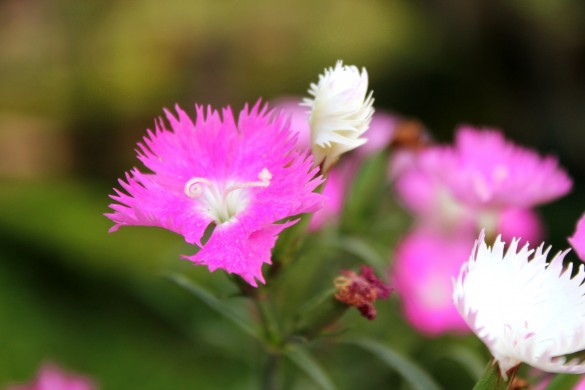 The name Dianthus is from the Greek words dios (“god”) and anthos (“flower”), and was cited by the Greek botanist Theophrastus. This quintessential cottage flower is treasured for its grass-like, blue-green foliage and abundant starry flowers. Depending on the species, flowers appear in spring or summer and tend to be pink, red, white, rose, or lavender, but come in nearly all shades except true blue. Plants range from tiny creeping groundcovers to 30-inch-tall cut flowers.
The name Dianthus is from the Greek words dios (“god”) and anthos (“flower”), and was cited by the Greek botanist Theophrastus. This quintessential cottage flower is treasured for its grass-like, blue-green foliage and abundant starry flowers. Depending on the species, flowers appear in spring or summer and tend to be pink, red, white, rose, or lavender, but come in nearly all shades except true blue. Plants range from tiny creeping groundcovers to 30-inch-tall cut flowers.
 Dianthus are mostly perennial herbs, a few are annual or biennial, and some are low subshrubs with woody basal stems. The leaves are opposite, simple, mostly linear and often strongly glaucous grey-green to blue-green. The flowers have five petals, typically with a frilled or pinked margin, and are (in almost all species) pale to dark pink.
Dianthus are mostly perennial herbs, a few are annual or biennial, and some are low subshrubs with woody basal stems. The leaves are opposite, simple, mostly linear and often strongly glaucous grey-green to blue-green. The flowers have five petals, typically with a frilled or pinked margin, and are (in almost all species) pale to dark pink.


